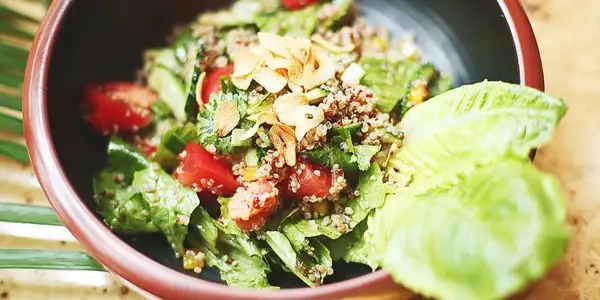
Most nutritionists recommend a balanced diet to keep everyone fit and healthy. However, the exact meaning of a balanced diet is not clear to everyone. A...
Read more


|
Nutrient |
Per 100 g |
|---|---|
|
Calorific value |
1528 kJ |
|
Energy |
365 kcal |
|
Carbohydrates |
75 g |
|
Protein |
11 g |
|
Fat |
1 g |
The food Kritharaki (raw) is composed of the following macronutrients.
Kritharaki have some advantages:
Kritharaki are rice noodles used mainly in Greece and the Mediterranean region. They are made from durum wheat semolina and have an elongated, tubular shape. Kritharaki are often used in soups and stews, but are also suitable for many other dishes such as salads, casseroles and even desserts.
Kritharaki have a slightly nutty and grainy texture and are very versatile in the kitchen. They are also a good alternative for people who want to follow a gluten-free diet.
How are kritharaki made?
Kritharaki are usually made from durum wheat semolina. The semolina is ground and made into a dough, which is then shaped into elongated, tubular noodles.
Are kritharaki gluten-free?
Kritharaki are basically not gluten-free, as they are made from durum wheat semolina. However, many manufacturers are allowed to sell them as gluten-free if they contain less than 20 mg of gluten per kilogram.
What is the best way to store Kritharaki?
Kritharaki are best stored in an airtight container in a cool, dry place, such as the kitchen cupboard or pantry. This will keep them fresh longer. In general, kritharaki have a long shelf life and can easily be kept for several months if stored properly.
I love this app! The food is super varied and filling (and soo delicious!). With one purchase I have the ingredients for a whole week together, thanks to the shopping list. The ingredients are also readily available and not really expensive.
Nicole — App User
The first app in the field of nutrition tips that really convinces me. Updates get minor issues out of the way and new features are added all the time. Top!
Unknown user — App User
ave already tried many nutrition apps but here it is really great and you save a lot of time because you do not have to enter all the meals yourself! 👍👏
Mareen — App User
I don't usually rate apps but this one has to be rated.... I have never had such a great app just fits everything.... The nutrition plans are just absolutely awesome just everything is awesome many many thanks
Mareen — App User
This app is an excellent support for healthy eating even with little time and effort! Super recipes are also included. Highly recommended!
Lennert — App User